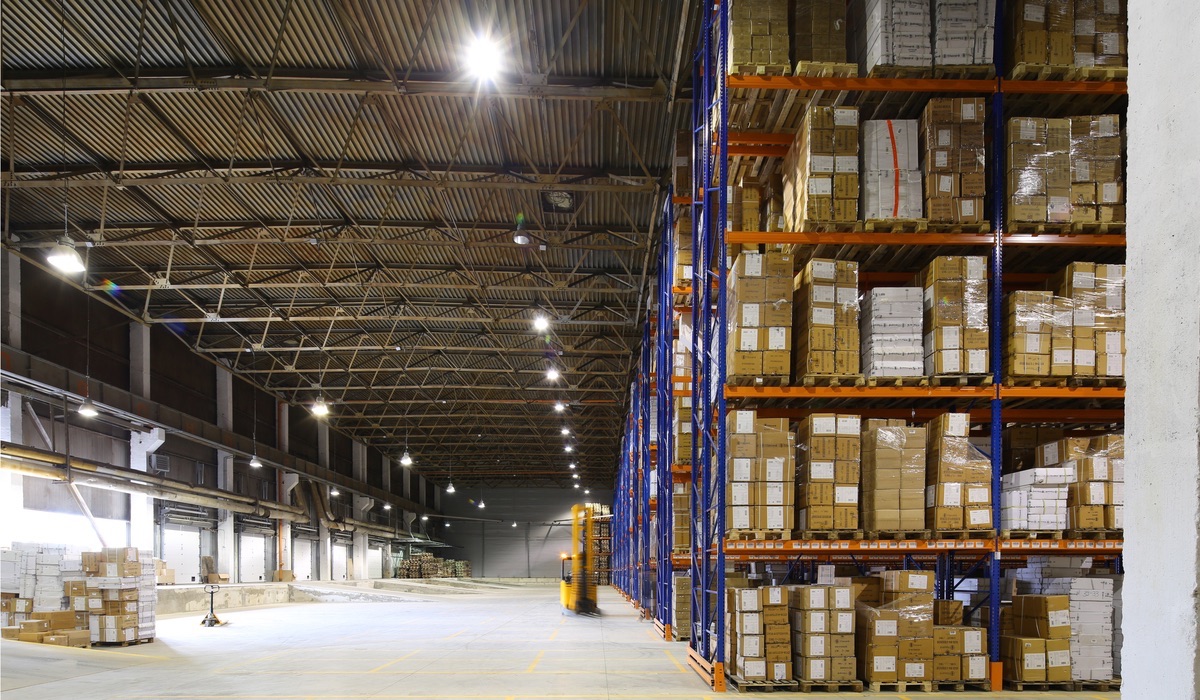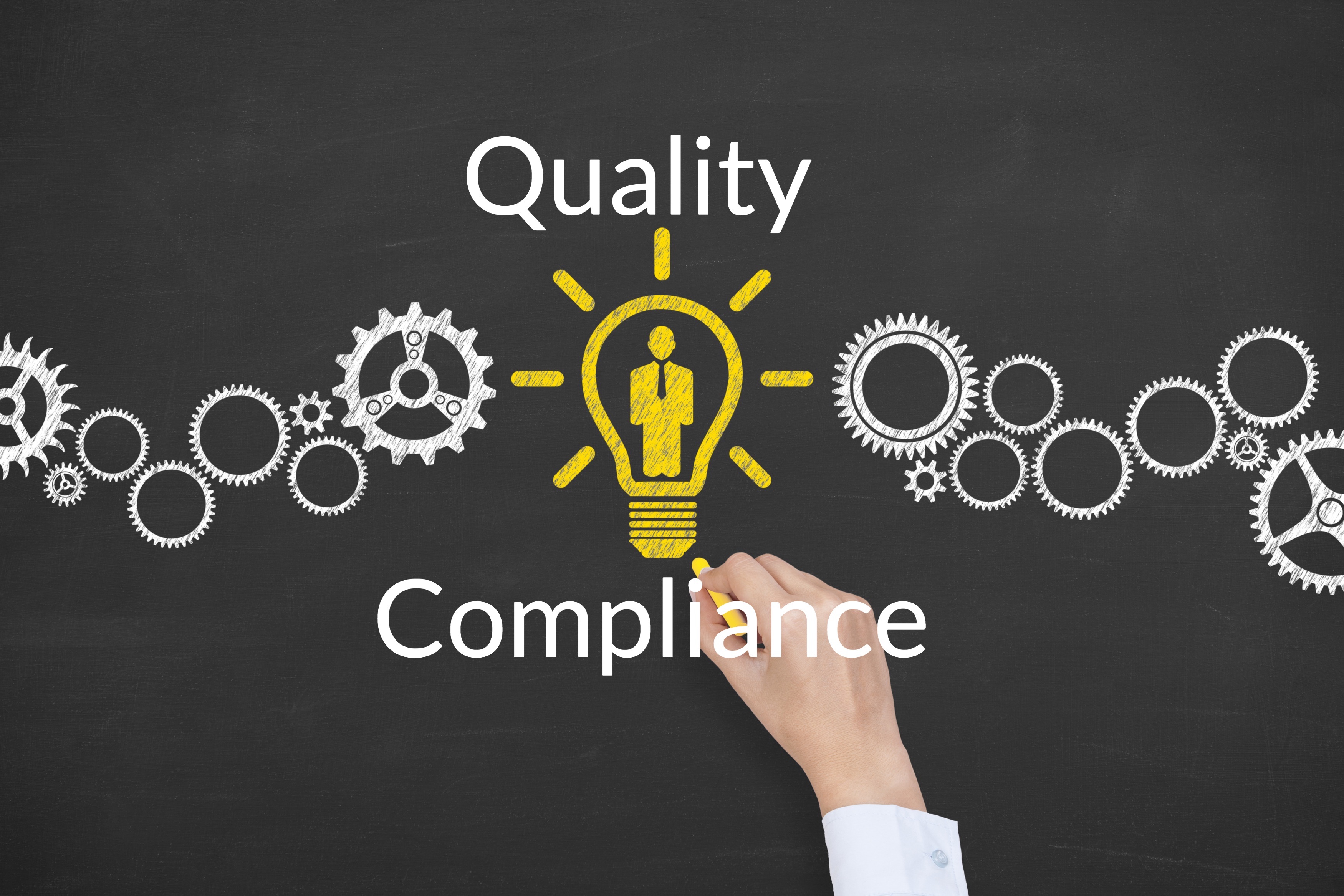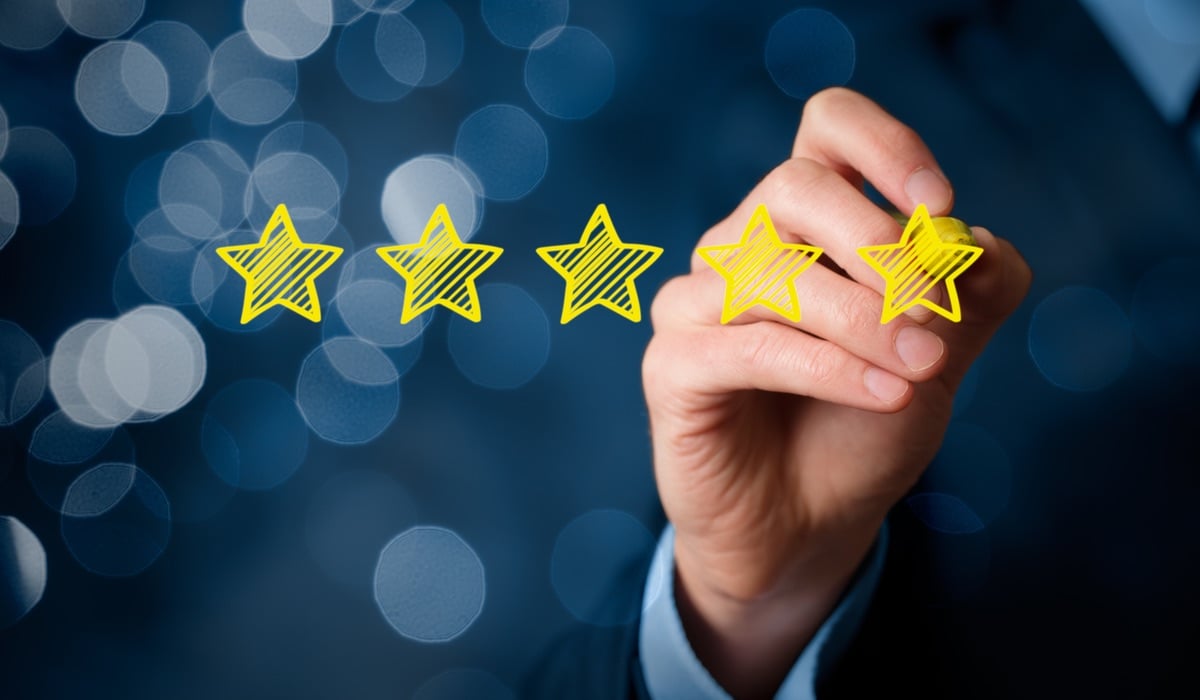The harshest judge of the quality of a product is your customers. As a households goods quality manager, it is your responsibility to ensure the systems and procedures you have in place, run as smoothly and effectively as possible.
In this blog post, we look at the role of a quality manager and the benefits of adopting quality management systems as a part of your supply chain strategy.
It may be necessary, to begin with, an appropriate definition of the role of a quality manager to help put perspective on how they can assist purchasing departments with their quality systems;
 The purchasing department of any organization has many functions from procurement of raw materials all the way through to the load testing of various household goods through to policy compliance. Each of these components requires the leadership and technical skill and know-how of a quality manager to ensure the entire procedure is run effectively and according to set quality standards.
Quality managers can improve the quality systems within purchasing departments by ensuring there is a set of quality standards and metrics that need to be achieved, these standards can be anything from load testing results, to the delivery times of material or of the end product. It is essential to work closely with purchasing departments to develop relationships and collaborate with suppliers. This will have results for the quality of your systems and your end product.
The purchasing department of any organization has many functions from procurement of raw materials all the way through to the load testing of various household goods through to policy compliance. Each of these components requires the leadership and technical skill and know-how of a quality manager to ensure the entire procedure is run effectively and according to set quality standards.
Quality managers can improve the quality systems within purchasing departments by ensuring there is a set of quality standards and metrics that need to be achieved, these standards can be anything from load testing results, to the delivery times of material or of the end product. It is essential to work closely with purchasing departments to develop relationships and collaborate with suppliers. This will have results for the quality of your systems and your end product.
 – Every brand strives to increase their credibility within the global market, this standard can help you maintain that competitive advantage, as suppliers who have this standard are often selected over and above those who do not.
2. Improvement of customer satisfaction – At its very core this standard is about the improvement of customer satisfaction, through thorough planning and efficient implementation where the end user is satisfied with the functionality, quality of the product to the way in which it was delivered.
3. Better process integration – By understanding and analyzing your processes you will clearly be able to find improvements that need to be made. These are based on hard that is collected to make these improvements to your procedures.
4. Improve your evidence for decision making – Evidence-based decision-making is based on hard data. Decisions can then be made based on data which can allow for proper allocation of resources and in turn having cost benefits for your brand.
5. Create a continual improvement culture – By instilling a continuous improvement cycle within your buying office, you will not only increase your outputs, but also the quality and standard of your procedures and end product, and also creating that customer satisfaction.
A Quality Management system is essential to ensuring quality household good products and the processes that come from your purchasing departments.
This will provide accountability and sustainable relationships with your suppliers as they strive to meet a set of global standards. This can have far-reaching implications for your brand.
What is your experience in adopting a QMS within your purchasing departments?
– Every brand strives to increase their credibility within the global market, this standard can help you maintain that competitive advantage, as suppliers who have this standard are often selected over and above those who do not.
2. Improvement of customer satisfaction – At its very core this standard is about the improvement of customer satisfaction, through thorough planning and efficient implementation where the end user is satisfied with the functionality, quality of the product to the way in which it was delivered.
3. Better process integration – By understanding and analyzing your processes you will clearly be able to find improvements that need to be made. These are based on hard that is collected to make these improvements to your procedures.
4. Improve your evidence for decision making – Evidence-based decision-making is based on hard data. Decisions can then be made based on data which can allow for proper allocation of resources and in turn having cost benefits for your brand.
5. Create a continual improvement culture – By instilling a continuous improvement cycle within your buying office, you will not only increase your outputs, but also the quality and standard of your procedures and end product, and also creating that customer satisfaction.
A Quality Management system is essential to ensuring quality household good products and the processes that come from your purchasing departments.
This will provide accountability and sustainable relationships with your suppliers as they strive to meet a set of global standards. This can have far-reaching implications for your brand.
What is your experience in adopting a QMS within your purchasing departments?
A quality manager’s role is “concerned with monitoring and advising on the performance of the quality management system, producing data and reporting on performance, measuring against set standards.”
Understanding the role of a quality manager leads into understanding what a quality management system (QMS) is:“A QMS is a set of policies, processes and procedures required for planning and execution of a product or service.”
 The purchasing department of any organization has many functions from procurement of raw materials all the way through to the load testing of various household goods through to policy compliance. Each of these components requires the leadership and technical skill and know-how of a quality manager to ensure the entire procedure is run effectively and according to set quality standards.
Quality managers can improve the quality systems within purchasing departments by ensuring there is a set of quality standards and metrics that need to be achieved, these standards can be anything from load testing results, to the delivery times of material or of the end product. It is essential to work closely with purchasing departments to develop relationships and collaborate with suppliers. This will have results for the quality of your systems and your end product.
The purchasing department of any organization has many functions from procurement of raw materials all the way through to the load testing of various household goods through to policy compliance. Each of these components requires the leadership and technical skill and know-how of a quality manager to ensure the entire procedure is run effectively and according to set quality standards.
Quality managers can improve the quality systems within purchasing departments by ensuring there is a set of quality standards and metrics that need to be achieved, these standards can be anything from load testing results, to the delivery times of material or of the end product. It is essential to work closely with purchasing departments to develop relationships and collaborate with suppliers. This will have results for the quality of your systems and your end product.
Check out our comprehensive guide on optimizing your quality assurance systems.
ISO 9001: 2015 ISO 9001: 2015 is an example of a QMS, which is a set of requirements a supplier needs to comply with to consistently meet specific requirements and that they also meet a specified set of regulations. Applying this ISO standard can have significant benefits for your brand, let’s take a look at some of the key benefits it can have: 1. Improvement of your credibility and image – Every brand strives to increase their credibility within the global market, this standard can help you maintain that competitive advantage, as suppliers who have this standard are often selected over and above those who do not.
2. Improvement of customer satisfaction – At its very core this standard is about the improvement of customer satisfaction, through thorough planning and efficient implementation where the end user is satisfied with the functionality, quality of the product to the way in which it was delivered.
3. Better process integration – By understanding and analyzing your processes you will clearly be able to find improvements that need to be made. These are based on hard that is collected to make these improvements to your procedures.
4. Improve your evidence for decision making – Evidence-based decision-making is based on hard data. Decisions can then be made based on data which can allow for proper allocation of resources and in turn having cost benefits for your brand.
5. Create a continual improvement culture – By instilling a continuous improvement cycle within your buying office, you will not only increase your outputs, but also the quality and standard of your procedures and end product, and also creating that customer satisfaction.
A Quality Management system is essential to ensuring quality household good products and the processes that come from your purchasing departments.
This will provide accountability and sustainable relationships with your suppliers as they strive to meet a set of global standards. This can have far-reaching implications for your brand.
What is your experience in adopting a QMS within your purchasing departments?
– Every brand strives to increase their credibility within the global market, this standard can help you maintain that competitive advantage, as suppliers who have this standard are often selected over and above those who do not.
2. Improvement of customer satisfaction – At its very core this standard is about the improvement of customer satisfaction, through thorough planning and efficient implementation where the end user is satisfied with the functionality, quality of the product to the way in which it was delivered.
3. Better process integration – By understanding and analyzing your processes you will clearly be able to find improvements that need to be made. These are based on hard that is collected to make these improvements to your procedures.
4. Improve your evidence for decision making – Evidence-based decision-making is based on hard data. Decisions can then be made based on data which can allow for proper allocation of resources and in turn having cost benefits for your brand.
5. Create a continual improvement culture – By instilling a continuous improvement cycle within your buying office, you will not only increase your outputs, but also the quality and standard of your procedures and end product, and also creating that customer satisfaction.
A Quality Management system is essential to ensuring quality household good products and the processes that come from your purchasing departments.
This will provide accountability and sustainable relationships with your suppliers as they strive to meet a set of global standards. This can have far-reaching implications for your brand.
What is your experience in adopting a QMS within your purchasing departments?
Are you ready to begin optimizing your quality procedures?
Just click here to request your FREE Quality Assurance Optimization guide!

 2. Strategic partnerships
2. Strategic partnerships 3. Inventory management tactics
Managing inventory is all about balance. Making sure that you don’t have too much inventory thus face the risk of increased storage costs and a longer time to market having an effect on your return. You also need to make sure you don’t have too little inventory forcing people to shop elsewhere for a similar product. Both sides of the equation can have detrimental effects for your brand. Here we look at two inventory management tactics that are applied by two of the biggest global retailers:
3. Inventory management tactics
Managing inventory is all about balance. Making sure that you don’t have too much inventory thus face the risk of increased storage costs and a longer time to market having an effect on your return. You also need to make sure you don’t have too little inventory forcing people to shop elsewhere for a similar product. Both sides of the equation can have detrimental effects for your brand. Here we look at two inventory management tactics that are applied by two of the biggest global retailers:
 4. Quality Control
4. Quality Control.jpg)

 is also a dedicated IT team to ensuring the safety of the software and only API employees are allowed to make modifications to the platform.
is also a dedicated IT team to ensuring the safety of the software and only API employees are allowed to make modifications to the platform. Many of the compliance complexities that arise are in the collection and gathering of all the necessary documentation. Many manufacturers, importers and retailers today are still operating on outdated systems like spreadsheets, creating unreliable data and documentation, which creates an almost insurmountable task trying to maintain the information for each product reference.
Many of the compliance complexities that arise are in the collection and gathering of all the necessary documentation. Many manufacturers, importers and retailers today are still operating on outdated systems like spreadsheets, creating unreliable data and documentation, which creates an almost insurmountable task trying to maintain the information for each product reference.  you insight into your compliance status whenever you need it. There are also progress charts allowing you actionable insight into timelines and your supplier progress. This solution is also able to store all your documents for up to 10 years, ensuring your documents are safely stored for any future reference.
you insight into your compliance status whenever you need it. There are also progress charts allowing you actionable insight into timelines and your supplier progress. This solution is also able to store all your documents for up to 10 years, ensuring your documents are safely stored for any future reference. 
 The quality of a product can be defined in many ways and is almost always dependent on your specific consumer and their definition of quality for your specific item. So in that light, you will need to know exactly what your consumer is looking for to create the quality your brand is looking to achieve.
When a consumer sets out to look for a quality product, they want to feel as though they have paid less than what the actual product is worth, the quality of the product far surpassing the amount they ended up paying. Fulfilling the need to exceed the consumer’s expectations, this is what true quality is all about.
If fulfilling the need to meet your consumer’s expectations is at the top of your company’s agenda, is it not essential for your brand’s products to meet a level of quality that does just that? Let me leave you pondering that for a bit.
In attempting to understand your customer’s definition of quality, it will be important to note that fulfilling consumer expectation and experience forms a part of that definition.
Let me give you an example; If a consumer orders a product that has met and passed all quality tests it needed to meet, that product for all intents and purposes is a quality item. But, if the order arrives later than promised or arrives with a missing screw or the incorrect color, the consumer may not define this product as an item of value and quality.
Striving for product quality is a stems right from the raw materials used, to the way in which it arrives to your customer, therefore every step needs to be taken into consideration.
The quality of a product can be defined in many ways and is almost always dependent on your specific consumer and their definition of quality for your specific item. So in that light, you will need to know exactly what your consumer is looking for to create the quality your brand is looking to achieve.
When a consumer sets out to look for a quality product, they want to feel as though they have paid less than what the actual product is worth, the quality of the product far surpassing the amount they ended up paying. Fulfilling the need to exceed the consumer’s expectations, this is what true quality is all about.
If fulfilling the need to meet your consumer’s expectations is at the top of your company’s agenda, is it not essential for your brand’s products to meet a level of quality that does just that? Let me leave you pondering that for a bit.
In attempting to understand your customer’s definition of quality, it will be important to note that fulfilling consumer expectation and experience forms a part of that definition.
Let me give you an example; If a consumer orders a product that has met and passed all quality tests it needed to meet, that product for all intents and purposes is a quality item. But, if the order arrives later than promised or arrives with a missing screw or the incorrect color, the consumer may not define this product as an item of value and quality.
Striving for product quality is a stems right from the raw materials used, to the way in which it arrives to your customer, therefore every step needs to be taken into consideration.
 craze of fidget spinners and, where 200, 000 of these spinners have been recalled due to it
craze of fidget spinners and, where 200, 000 of these spinners have been recalled due to it  they want to know where its raw materials were sourced, how it was made, who made it and what its level of quality is. They ask themselves whether or not your product will be an investment in their lives.
The key here will be to know your target market, know your consumer. If you do not know what they want, you will struggle to be their go-to brand; you will lose out on their brand evangelism and praise affecting your bottom line
“Is this the type of brand and product you wish to create?”
Retailers today are under so much pressure with the current supply and demand of products, that quality and/or compliance is not always a priority.
“But, it should be!”
Bad quality and non-compliance both mean that your brand is at an unnecessarily high risk with regards to meeting regulations and your reputation. It will be worth all the hard yards that you put in from the creation and design to the manufacturing and distribution of your products. This will help mitigate unnecessary risk, saving you money and precious time.
they want to know where its raw materials were sourced, how it was made, who made it and what its level of quality is. They ask themselves whether or not your product will be an investment in their lives.
The key here will be to know your target market, know your consumer. If you do not know what they want, you will struggle to be their go-to brand; you will lose out on their brand evangelism and praise affecting your bottom line
“Is this the type of brand and product you wish to create?”
Retailers today are under so much pressure with the current supply and demand of products, that quality and/or compliance is not always a priority.
“But, it should be!”
Bad quality and non-compliance both mean that your brand is at an unnecessarily high risk with regards to meeting regulations and your reputation. It will be worth all the hard yards that you put in from the creation and design to the manufacturing and distribution of your products. This will help mitigate unnecessary risk, saving you money and precious time.
 any organizations consider third-party audits for many reasons, mainly they have come to the decision to create a quality management system (QMS) such as ISO 9001. A third-party auditor would come in and assess whether or not this organization meets the requirements as laid out by the above QMS. A third-party auditor will then provide your organization with a certification stipulating that you meet the requirements as laid out. This is often a preferred audit option as the results are unbiased and certification has become a competitive differentiator.
any organizations consider third-party audits for many reasons, mainly they have come to the decision to create a quality management system (QMS) such as ISO 9001. A third-party auditor would come in and assess whether or not this organization meets the requirements as laid out by the above QMS. A third-party auditor will then provide your organization with a certification stipulating that you meet the requirements as laid out. This is often a preferred audit option as the results are unbiased and certification has become a competitive differentiator.


 nd this tool should be inclusive of all levels of employees for creative and productive inputs.
nd this tool should be inclusive of all levels of employees for creative and productive inputs.



